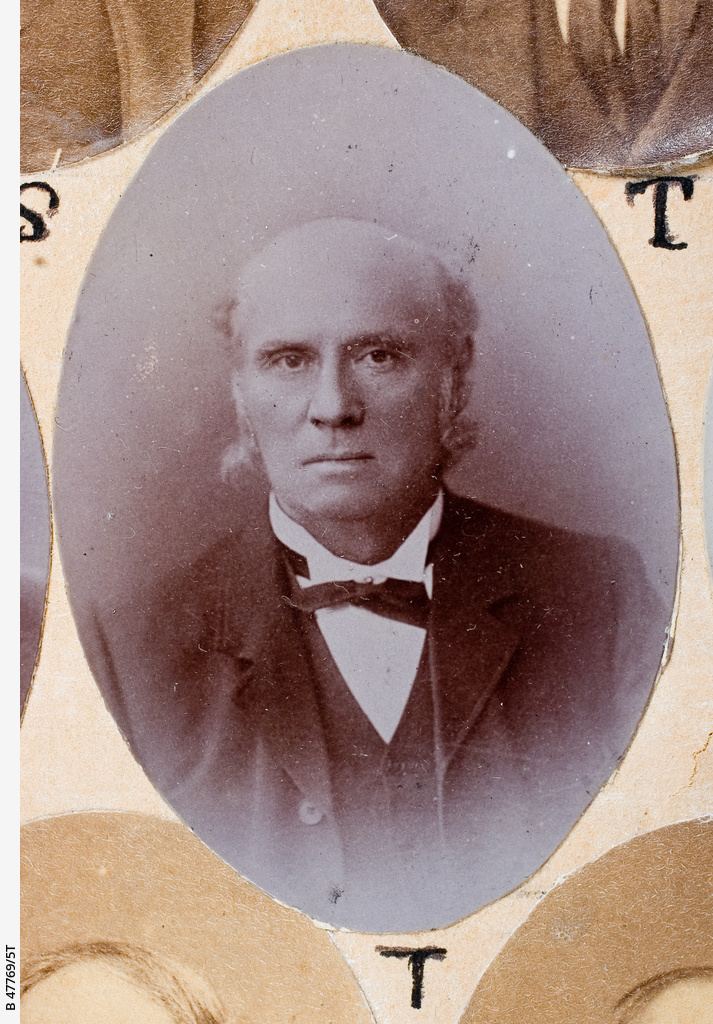Name William Simms | ||
 | ||
William Knox Simms (1830 – 25 December 1897) was a brewer, businessman and politician in the early days of South Australia.
Contents
History
Knox migrated to South Australia from England in, arriving in December 1845. In 1851 as partner with John Hayter in the firm of Simms & Hayter, he founded the Pirie Street Brewery, then in 1856 with the firm of W. K. Simms & Co., ran the Halifax Street Brewery, and in 1861 took over the famous West End Brewery, off Hindley Street near West Terrace, and built it up into a highly profitable business; from 1866 to 1879 with partner Edgar Chapman, and for a time operated the "Adelaide Brewery" in Waverley, Sydney with Hampton Carroll Gleeson. In 1888 the West End Brewery was taken over by the South Australian Brewing and Malting Company. That business later amalgamated with Edwin Smith's Kent Town Brewing Company, whose malt towers remain a prominent East Adelaide landmark. Simms remained a director of the company until his death, but his duties were not onerous, and his dividends immense.
Other business activities
In late 1853 Simms & Hayter took over the mail business of John and James Chambers, which proved highly profitable.
Broken Hill mine
He was a director of Equitable Fire Insurance Co.
Politics
In 1867 he was elected to the Adelaide City Council for the Gawler ward. He proved to be a popular representative and was elected to the House of Assembly in 1868 for the West Adelaide district, with H. R. Fuller as his colleague. The fifth Parliament was dissolved on 2 March 1870 and Simms did not stand for the ensuing election, but was again elected on 14 December 1871, with Judah Moss Solomon as colleague. On 10 February 1875 Simms was again elected, with Thomas Johnson filling the other seat. He resigned in June 1876, thus allowing John Darling, Sr., to take his place, but he won again in April 1878 in conjunction with Hugh Fraser. He finally retired from the Assembly in March 1881, when he was succeeded by C. C. Kingston. Simms remained out of Parliament until 28 February 1884, when he was a candidate at the first election for the Central district of the Legislative Council, his opponent being Philip Santo. Previously the Council had been chosen by the whole colony voting in one electorate, but by the Constitution Act of 1881 its strength was increased from 18 to 24 members, and it was divided into four electoral districts. The first vacancy under the new system was caused by the death of Sir William Morgan, and Simms won in a close and hard fought contest. He resigned from the Council on 14 April 1891. During his long period in politics he never sought a Cabinet position or personal gain, never engaged in party politics, and retained a high popularity with fellow members and electors alike.
Racing
He was a keen race-goer and supported the Totalizator Bill, steering it through to its second reading, but never owned a thoroughbred.
He was present at the meeting held at the John Bull Hotel, Adelaide, in October 1861, for the purpose of putting racing in the colony on a more satisfactory footing, and was elected a member of the club then established, known as the Second South Australian Jockey Club, and was elected to its committee, along with E. M. Bagot, P. B. Coglin, G. Bennett, and W. Blackler. Simms resigned on 11 January 1864, but on the 20th of the same month he was elected to fill the vacancy caused by the retirement of Coglin, and continued to hold the office for several years. In 1864, at his instigation, it was decided to dispense with sweepstakes and substitute fixed sums as prizes. In those days the Adelaide Cup was worth £500 with a sweepstake of 50 sovereigns added. In 1866 when the S.A.J.C. became financially embarrassed, Simms was one of the guarantors for the payment of the overdraft at the National Bank. C. B. Fisher resigned his membership of the committee in 1867, and Simms was appointed chairman. In that year P. B. Coglin proposed the handing over of the lease of tho Old Course to the Jockey Club on the club accepting the liabilities, but the proposition was not entertained. Mr. Simms took an active part in promoting the race meeting held on the Old Course in 1869 in honour of the visit of Prince Alfred, the Duke of Edinburgh. He was one of those who met at the Old Stock Exchange on 19 September 1888 to re-form the South Australian Jockey Club.
Family life
Simms married Jane Faulkner (c. 1829 – 28 August 1905). They had four sons (one, William, died aged three) and three daughters:
They lived at Victoria Place, Glenelg, overlooking Colley Reserve. Simms suffered greatly from rheumatism in later life and made trips to the spas of Germany and New Zealand seeking relief. His end though, was swift and he was buried in St. Jude's cemetery, Brighton. A stained glass window (depicting St Mark, the Evangelist) in St. Peter's Church, Glenelg, is dedicated to his memory.
Estate
His estate at death was valued at £345,000 (more than AUD 500,000,000 today). A legal dispute arose as to whether gifts he made by deed poll to his family were an attempt to evade succession duty, and therefore liable for double taxation.
